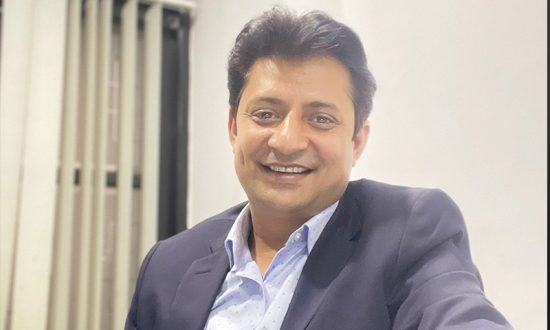Ajay Khajuria is a seasoned HR leader with in-depth and solid end-to-end HR experience and significant accomplishments in talent sourcing, people management, organization development, employee and labor relations and negotiations, employee engagement and the skills to streamline systems and processes to improve efficiency, increase rate of retention and establish matrices to identify and address gaps. Ajay has over 20 years of professional experience gained predominantly while working in India, Philippines, UK & the US. He has experience in the Customer Service industry, BFSI, Revenue Cycle Management/Healthcare, Telecom, Emerging Markets, Data Center and Power Infrastructure Industry.
Today’s business environment may be the first to include five different generations working side by side towards shared economic and commercial goals. Companies today are more driven towards performance and efficiency models, that they strive to hire the right candidates amongst a varied set of generations – Generation Z, Millennials, Generation Xers, Baby Boomers, and the Silent generation. While enterprising and age-diversity hiring is a great way to enable creativity and objectivity, the biggest challenge it creates is to have a work culture that is relatable to every age group and to bring out the best amongst the varied population.
Technology, Diversity & Inclusion, and Experience plays a vital role in boosting productivity, however, the role of creativity and innovation is what keeps the workforce engaged, motivated, and ahead of its peers. This can only be achieved through a multigenerational workforce.
Many large organizations have a multi-generational workforce but are unable to create the right balance and dynamics and inclusive culture for all the age groups to function seamlessly. From an industry perspective these three catalysts are quite important for a multi-generational workforce to flourish in an organization:
Boundaries and mutual respect: In an organization, from the youngest employee to the senior-most employee everyone demands the same respect regardless of age. A leader needs to develop an ecosystem where the younger generation respect and look up to the older generation as mentors and experienced professionals who can add value to the decision-making process. Similarly, the older generation needs to be accessible and open to new-age ideas, technologies, and ways to work, giving younger employees an equal opportunity in key projects. To boost mutual respect, learning, and boundaries, the leaders need to start with team-bonding activities, off-sites and pair up multi-generational talent in various projects to set the ball rolling
Work culture & environment: One of the major concerns in a multi-generational is work culture and work environment. Mostly, older-generation employees still prefer face-to-face interaction and things to be worked hierarchically. They sometimes prefer to have meetings, discussions in closed doors/board rooms to maintain complete privacy. On the other hand, younger employees are much more agile and tend to work in an open work style. This includes having an open-door policy, meetings and discussions over lunch/ coffee, interacting over WhatsApp/texts, etc unless there is something critical or confidential. Leaders need to establish their unique work style and culture in the organization. This should ideally be a mixed set-up between the older and younger generation and have a sense of inclusiveness. For instance, workspaces can have bean bags and lexi-desk set up as well as board rooms/ meeting rooms to cater to both generations. Additionally, the medium of communication can be face-to-face to WhatsApp/text/ Zoom call, etc.
Understanding needs, drives, and key factors of motivations: A leader needs to understand a set of generations and what drives them to effectively devise a strategy to align them to organizational goals and objectives. For instance, Baby Boomers, Millennials, and other older employees may strive for recognition, stability, retirement, and stock options. They also would want to be considered as consultants and mentors in shaping up the future of the company. Similarly, the younger generations today are quite vocal about concerns such as sustainability and climate change, Flexi-work life balance and policies, hybrid-work models, rewards and recognition, learning and development initiatives, etc. The leader needs to incorporate these drives and devise a strategy for specific target groups
The pivotal role in striking the right balance between new-age dynamics of employees and the older- generation lies not just with the management, but it’s a task that lies on the shoulders of all the employees. Understanding and appreciating each other’s point of view, embracing change, being flexible and an attitude to take the feedback, having a healthy mentor-mentee relationship are various ways in which the older set of employees and the younger- generation can bond and revolutionize the workplace for better work-culture and foster growth, creativity, and innovation.


